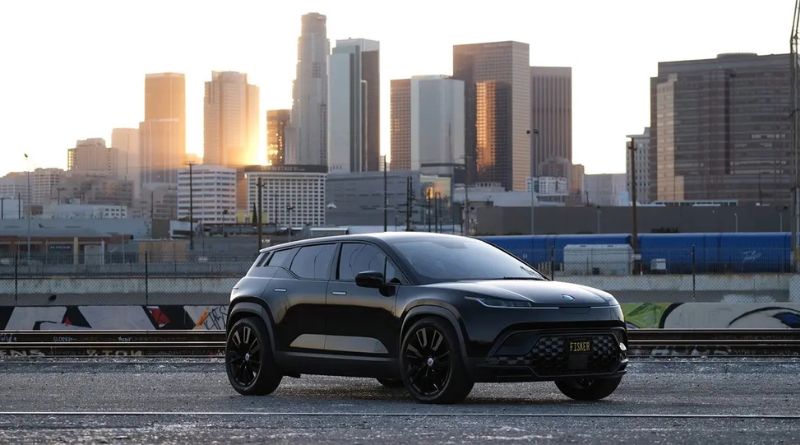Fisker Inc. (FSR) is an electric vehicle (EV) manufacturer that has gained significant attention as it looks to make its mark in the highly competitive EV market. Founded by Henrik Fisker, an automotive designer with a history of successful ventures, Fisker’s aim is to provide sustainable, innovative, and stylish electric vehicles. With several exciting projects in the pipeline and the EV sector poised for tremendous growth, many investors are wondering: What is the future of Fisker stock by 2025?
In this article, we’ll dive into the factors that could shape Fisker’s stock performance by 2025, analyzing the company’s growth potential, challenges, and key trends in the EV industry that could influence its stock price.
Table of Contents
Understanding Fisker Inc.: A Quick Overview
Fisker was founded in 2016 with the vision of creating eco-friendly vehicles without compromising on style or performance. The company has positioned itself as an innovator in the electric vehicle market, focusing on sustainable production, cutting-edge technology, and attractive design.
Fisker’s first vehicle, the Fisker Karma, was a luxury plug-in hybrid sports sedan that gained attention for its sleek design but struggled commercially. However, the company refocused its efforts on fully electric vehicles with plans for mass production.
Today, Fisker is best known for the Fisker Ocean, an all-electric SUV, and the Fisker Pear, a smaller, more affordable electric vehicle designed for urban environments. Fisker’s focus on sustainability is evident in its commitment to producing environmentally friendly vehicles using recycled materials, as well as developing a unique leasing model that promotes access to EVs without the traditional ownership model.
Factors Influencing Fisker Stock Performance
Before we dive into stock predictions for 2025, it’s important to consider the key factors that could influence Fisker’s future performance.
1. The Growth of the EV Market
The electric vehicle market is expected to continue growing rapidly over the next decade, driven by factors such as government incentives, technological advancements, and increasing consumer demand for clean energy alternatives. As a part of the broader EV trend, Fisker is positioned to benefit from the increasing shift toward electric mobility. By 2025, the EV market could be significantly larger, providing Fisker with more opportunities for expansion and higher sales volumes.
2. Fisker’s Product Portfolio and Innovation
Fisker’s flagship model, the Fisker Ocean, has already generated significant interest, with the company reporting thousands of reservations. The Ocean SUV features an attractive design, impressive range, and sustainable materials like recycled plastics and vegan leather. If Fisker can successfully ramp up production and deliver on its promises, the Ocean could become a key player in the EV market, boosting the company’s growth.
Additionally, Fisker’s upcoming Fisker Pear is expected to target a more budget-conscious demographic, opening up new market segments for the company. The Pear’s smaller size and lower price point could help Fisker tap into the growing demand for affordable EVs, particularly in urban markets.
Moreover, Fisker has been exploring the possibility of developing other models, including electric trucks and commercial vehicles, which could further diversify its product portfolio and expand its customer base.
3. Manufacturing and Production Partnerships
Fisker is relying on strategic partnerships to bring its vehicles to market. Notably, the company has partnered with Magna International, one of the largest automotive suppliers, to handle manufacturing for the Fisker Ocean. This partnership has allowed Fisker to avoid the heavy capital expenditure required for building its own production facilities, while Magna’s expertise in large-scale manufacturing helps ensure that Fisker’s vehicles are produced efficiently and at high quality.
The success of these manufacturing partnerships will be crucial for Fisker’s stock price in 2025. If Fisker can meet its production targets and deliver vehicles on time, it will likely build investor confidence and contribute to stock price growth.
4. Regulatory Environment and Government Incentives
Government policies and regulations are important factors for any EV company. In many regions, including the United States, Europe, and China, governments are implementing stricter emissions standards, encouraging the adoption of electric vehicles. Fisker stands to benefit from these policies, which may include tax incentives, rebates, and grants for electric vehicle manufacturers.
However, the regulatory landscape can also pose challenges. Changes in government policies, such as a reduction in subsidies or the introduction of new regulations, could affect Fisker’s profitability. Monitoring government actions related to EVs will be crucial in predicting Fisker’s performance.
5. Competition in the EV Market
The EV market is highly competitive, with established automakers such as Tesla, Rivian, Lucid Motors, and legacy automakers like General Motors and Ford investing heavily in electric vehicles. Fisker will need to differentiate itself in an increasingly crowded market, focusing on unique selling points such as sustainability, design, and affordability. If Fisker can carve out a niche and effectively compete with other EV manufacturers, its stock could benefit from strong sales growth.
6. Financial Performance and Profitability
As of now, Fisker is still in the process of ramping up production and is not yet profitable. Investors will be closely monitoring the company’s financial results, particularly its ability to achieve positive cash flow and move toward profitability. Positive earnings reports and strong sales figures could provide a significant boost to Fisker’s stock price in 2025.
Fisker Stock Predictions for 2025
Given the factors above, here are some possible scenarios for Fisker’s stock price by 2025:
Bullish Scenario: Strong Growth and Market Leadership
In a best-case scenario, Fisker could achieve substantial growth by 2025. The Fisker Ocean and Pear could meet or exceed sales targets, helping the company capture a significant share of the growing EV market. Successful production partnerships, strong customer demand, and continued innovation in sustainable vehicle design could drive Fisker’s stock price higher.
If Fisker achieves profitability and secures its position as a key player in the EV market, its stock could experience a significant uptick, with potential for double-digit growth in the coming years. Investor confidence would likely soar if the company hits its production goals, expands its product portfolio, and successfully competes with larger players like Tesla.
Moderate Growth Scenario: Steady Progress
In a more moderate scenario, Fisker may experience steady growth without rapid acceleration. The company’s vehicles could continue to gain popularity, but it might face challenges in scaling production or differentiating itself from competitors. However, Fisker could still see growth in stock price as it builds its customer base and improves its financials over time.
This scenario would see Fisker’s stock rise gradually, but not as dramatically as in the bullish scenario. A steady increase in vehicle deliveries and progress toward profitability could help the stock achieve moderate gains by 2025.
Bearish Scenario: Struggles with Production or Competition
In a worst-case scenario, Fisker could face significant challenges in meeting its production targets or competing effectively with other EV manufacturers. If the company encounters production delays, struggles with supply chain issues, or fails to meet consumer demand, its stock could suffer. Moreover, intense competition from larger automakers and newer entrants could slow Fisker’s growth prospects.
In this scenario, Fisker’s stock could decline or stagnate, particularly if the company’s financials remain weak and it fails to establish itself as a leading player in the EV space.
FAQs
1. What is Fisker’s current stock price?
Fisker’s stock price can fluctuate, so it’s important to check real-time prices from financial platforms like Yahoo Finance or Google Finance. As of the last update, Fisker’s stock price has been around $6 to $10 per share, reflecting investor sentiment as the company ramps up production.
2. How can I invest in Fisker stock?
You can invest in Fisker stock through a brokerage account. Make sure to conduct thorough research or speak with a financial advisor before making any investment decisions.
3. Is Fisker a good long-term investment?
Fisker has strong potential, but like any emerging company, it carries risks. If the company can successfully scale its production, achieve profitability, and differentiate itself from competitors, it could be a good long-term investment. However, the EV industry is highly competitive, and Fisker will need to execute well on its plans.
4. What are the risks of investing in Fisker stock?
Key risks include production delays, supply chain issues, and competition from more established automakers. Additionally, the EV market’s regulatory environment and potential changes in government incentives could impact Fisker’s performance.
5. What is Fisker’s competitive advantage?
Fisker’s competitive advantage lies in its focus on sustainability, innovative design, and affordability. The company’s use of recycled materials and its unique leasing model could appeal to eco-conscious consumers looking for an alternative to traditional car ownership.
Conclusion
Fisker’s future looks promising, with strong potential for growth in the rapidly expanding electric vehicle market. By 2025, the company’s stock could experience significant growth if it successfully executes its production plans, gains market share, and differentiates itself from competitors. However, challenges such as manufacturing hurdles and stiff competition remain. As always, investors should carefully monitor Fisker’s financial performance and market trends before making any investment decisions.



